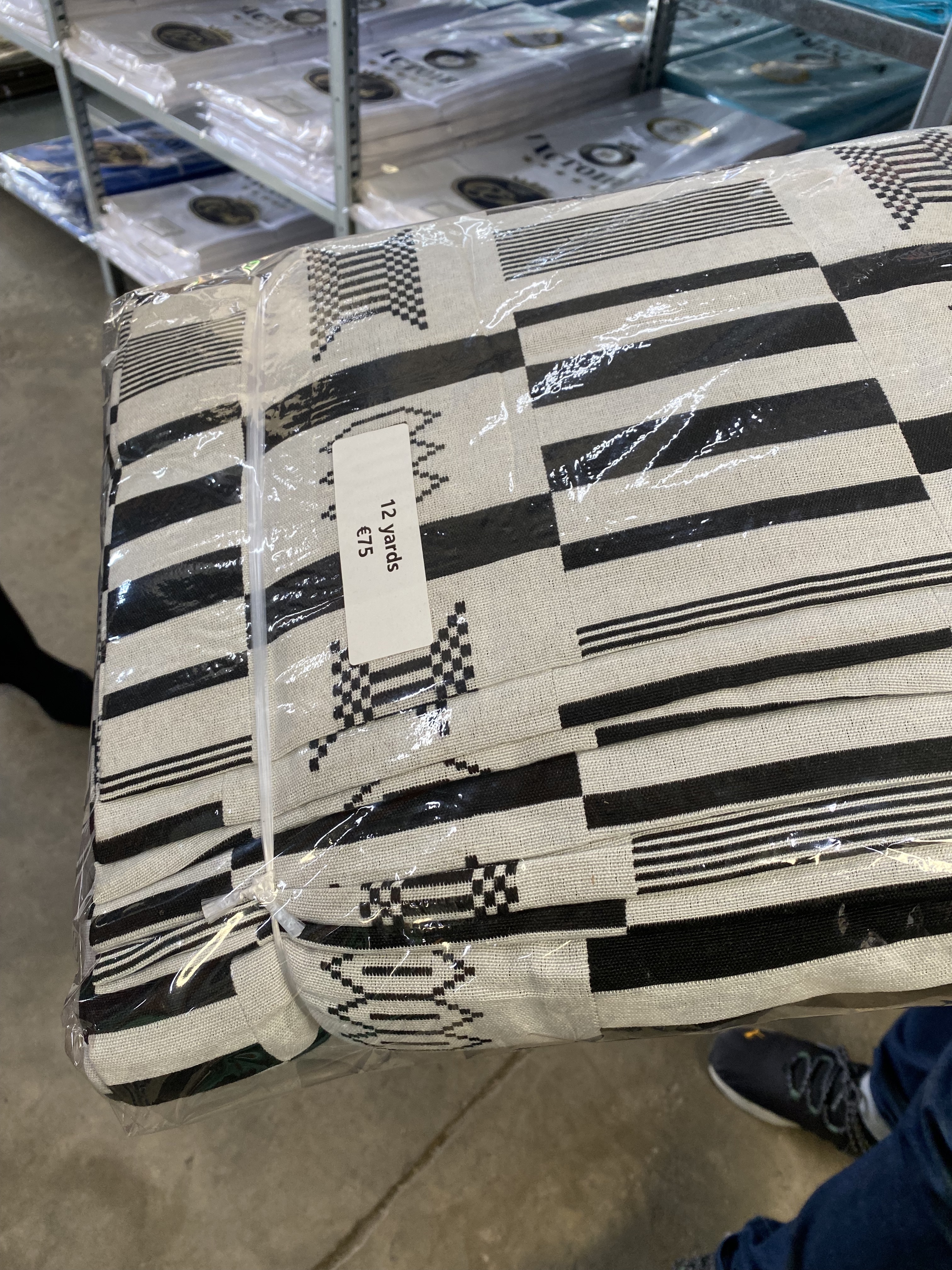Accession card
Description
Pictured here is a textile produced in India for the Ghanaian cloth market. It is a black and white cloth that appears to use a combination of a type of compound weave and floating warps. The patterns are taken from kente, a fine handwoven cloth originating in central and southern Ghana. It is woven in a way that imitates the structure of true kente, which is comprised of several narrow strips of cloth sewn together at the selvage. Kente is a treasured symbol of wealth and status among the Akan (the family of ethnicities to which the Asante belong) and the Ewe people. There are many types of kente with a dizzying variety of patterns, and strict sumptuary laws were once placed on the finest varieties of Asante Kente. These were reserved for the king and other royals, contributing to kente’s association with royalty and power. In contemporary Ghana, kente has become a marker of national identity, and among African Americans, kente has been adopted as a potent symbol of African pride. In Ghana, Kente is still a luxurious fabric, one reserved for special occasions and surrounded by an air of ceremony and honor.
Expensive wax print fabrics may be culturally important, precious, and imbued with a sense of prestige, but they cannot compare to the deep cultural significance placed on Kente. The need for Dutch cloth producers to insert themselves into the market for handwoven textiles despite already dominating the market for expensive wax prints resurrects images of longstanding colonial exchanges. The dynamics of these exchanges speak to a long history of Europe's fascination with the African cloth market and the complex ways they have managed to compete with local cloth production using products made in Europe and India. Europeans in the16th through 18th centuries were purchasing handwoven textiles from what is now Nigeria and Benin republic for sale to cloth markets in Ghana and Angola. These textiles were sold alongside European and Indian textiles in the 17th through the19th centuries. These imported textiles grew in popularity partially due to their similarities with the locally made cloth. At the cloth Market at Janson Holland, we can see the production of Indian cloth for African markets using African textile design sensibilities continues to the present day.
This trip to the Jansen Holland shop raises many questions about power dynamics and the control of production and distribution in non-white countries to other non-white countries. Who are Janson Holland’s primary competitors in the production of this handwoven cloth? Are they weaving cooperatives, guilds, and independent artisans in west Africa with nowhere near the amount of capital or resources as a Dutch textile company? Are they Chinese and Indian commercial textile producers who also make printed textiles for African consumers? Who are the Ghanaians buying this fabric? What is the economic situation for the Indian weavers producing this cloth? Are they commissioned by this Dutch company or employed by them? What are the dynamics of their interactions with Indian craftspeople, and how do issues of power and privilege come into play?
Code
Date
Location
Title
Medium
- Image



